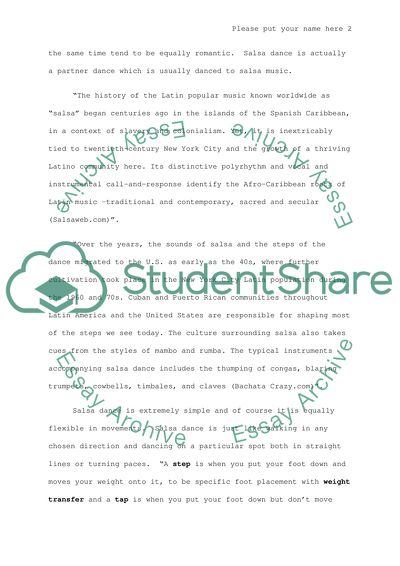Cite this document
(“Salsa as a Dance Essay Example | Topics and Well Written Essays - 1000 words”, n.d.)
Salsa as a Dance Essay Example | Topics and Well Written Essays - 1000 words. Retrieved from https://studentshare.org/miscellaneous/1515389-salsa-as-a-dance
Salsa as a Dance Essay Example | Topics and Well Written Essays - 1000 words. Retrieved from https://studentshare.org/miscellaneous/1515389-salsa-as-a-dance
(Salsa As a Dance Essay Example | Topics and Well Written Essays - 1000 Words)
Salsa As a Dance Essay Example | Topics and Well Written Essays - 1000 Words. https://studentshare.org/miscellaneous/1515389-salsa-as-a-dance.
Salsa As a Dance Essay Example | Topics and Well Written Essays - 1000 Words. https://studentshare.org/miscellaneous/1515389-salsa-as-a-dance.
“Salsa As a Dance Essay Example | Topics and Well Written Essays - 1000 Words”, n.d. https://studentshare.org/miscellaneous/1515389-salsa-as-a-dance.


